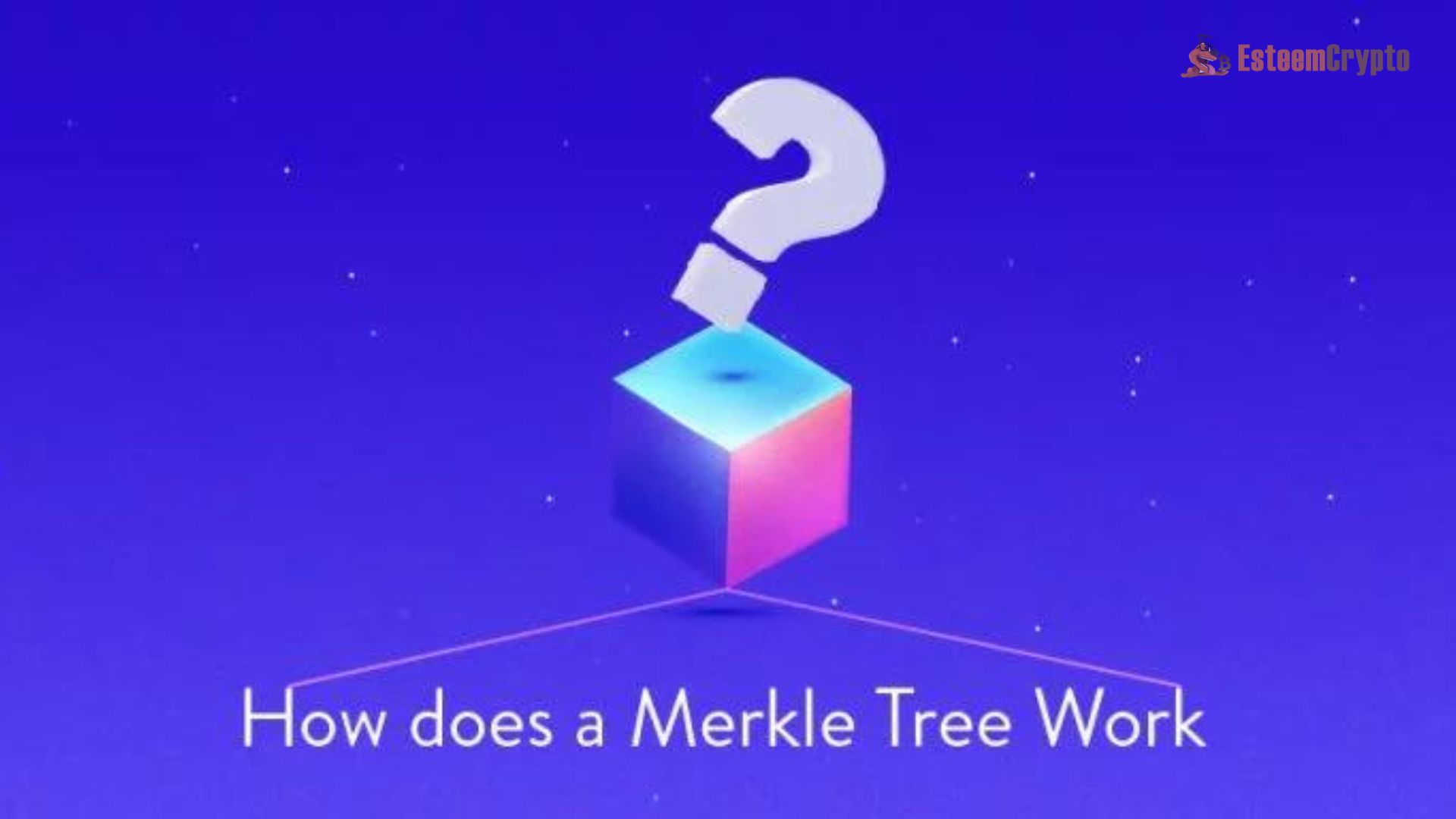Merkle Trees in Blockchain: The Backbone of Blockchain Integrity

Merkle Trees in Blockchain: It is crucial to understand how blockchain technology promises security, efficiency, and scalability in this ever-changing field. The Merkle tree stands out among these methods because it is a basic data structure essential to the efficiency and integrity of blockchain transaction verification. In this post, we will explore the Merkle tree, how it works in blockchain technology, and why it is important for distributed ledger security and scalability.
What is a Merkle Tree?
A Merkle tree, also known as a hash tree, is a binary tree structure used to efficiently and securely verify the integrity of data in a large dataset. Named after Ralph Merkle, who introduced the concept in 1979, this data structure is particularly valuable in cryptographic applications, such as blockchain.
At its core, a Merkle tree is composed of leaves, branches, and a root. The leaves contain the cryptographic hashes of individual data blocks (e.g., transactions in a blockchain), while the branches are nodes that store the hashes of their respective child nodes. The topmost node is the Merkle root, which summarizes the entire data structure. The Merkle root is a single hash that represents the integrity of all the underlying data blocks.
How Does a Merkle Tree Work?
To understand how a Merkle tree works, consider a simple example where we have four transactions (A, B, C, and D) in a blockchain.
- Hashing the Transactions: Each transaction is hashed individually, creating unique hash values:
- Hash(A)
- Hash(B)
- Hash(C)
- Hash(D)
- Creating Parent Nodes: These hash values are then paired and hashed together to create parent nodes:
- Hash(AB) = Hash(Hash(A) + Hash(B))
- Hash(CD) = Hash(Hash(C) + Hash(D))
- Creating the Merkle Root: The resulting parent node hashes are then hashed together to produce the Merkle root:
- Merkle Root = Hash(Hash(AB) + Hash(CD))
This process results in a single hash, the Merkle root, which is stored in the blockchain’s block header. This single hash can verify the integrity of the entire block of transactions.
Importance of Merkle Trees in Blockchain
Merkle trees are integral to blockchain technology for several reasons:
Efficient Data Verification
Verifying the integrity of transactions is crucial in a blockchain. Instead of having to compare every single transaction in a block, the Merkle tree allows for a more efficient process. By comparing only the relevant hashes, nodes can quickly verify whether a transaction is included in a block.
Optimized Storage and Bandwidth
Since only the Merkle root is stored in the block header, the need for storage space is minimized. This is particularly important in blockchain networks where storage and bandwidth are limited resources. Additionally, the Merkle tree structure allows nodes to transmit only a portion of the tree rather than the entire dataset, thereby reducing the amount of data that needs to be communicated.
Scalability
As blockchain networks grow, the ability to efficiently manage and verify large amounts of data becomes increasingly important. Merkle trees enable this by allowing the blockchain to scale without compromising on data integrity or requiring excessive computational resources.
Security and Tamper Resistance
One of the key benefits of the Merkle tree is its resistance to tampering. If even a single bit of a transaction is altered, the hash of that transaction will change, which in turn will alter the hashes of all the parent nodes up to the Merkle root. Since the Merkle root will now differ from the predicted value, it is straightforward to spot any data manipulation.
Applications of Merkle Trees in Blockchain
Merkle trees are used in various blockchain applications, each leveraging the structure’s benefits to enhance security, efficiency, and scalability.
Bitcoin and Cryptocurrency
In Bitcoin and other cryptocurrencies, the Merkle tree organizes and verifies transactions within a block. The Merkle root is included in the block header, which is then hashed to create a proof of work. This proof is essential for maintaining the integrity and security of the blockchain.
Smart Contracts
In platforms like Ethereum, Merkle trees execute smart contracts. They enable efficient verification of a contract’s state without requiring the entire blockchain to be downloaded or accessed.
Merkle Proofs and Simplified Payment Verification (SPV)
Merkle proofs allow for the verification of specific transactions without needing to download the entire blockchain. This is the foundation of Simplified Payment Verification (SPV), which is used in lightweight clients or wallets. With SPV, users can verify that a transaction is included in a block by only downloading the block headers and using a Merkle proof to trace back to the transaction.
Data Sharding
In large-scale blockchain networks, sharding divides the blockchain into smaller, more manageable pieces. Merkle trees enable efficient cross-shard communication and verification, ensuring that data remains consistent and secure across the entire network.
Challenges and Limitations
While Merkle trees offer significant advantages, they are not without their challenges:
Complexity
The implementation and management of Merkle trees can be complex, particularly in systems where the tree needs to be frequently updated or where large datasets are involved.
Resource Intensive
Although Merkle trees optimize storage and bandwidth, they still require computational resources for hash calculations, especially as the data grows in size.
Vulnerability to Quantum Computing
As quantum computing technology advances, there is a potential risk that the cryptographic hashes used in Merkle trees could be compromised. To maintain the security of Merkle trees in the future, quantum-resistant cryptographic algorithms would be required.
The Future of Merkle Trees in Blockchain
Merkle trees will play an increasingly important role in the future of blockchain technology. Merkle trees are already useful in blockchain networks, but they might become even more so with developments like quantum-resistant encryption, faster hashing algorithms, and novel consensus processes.
Furthermore, the demand for safe and extensible data structures such as Merkle trees will continue to rise with the proliferation of blockchain-based applications such as decentralized finance (DeFi), non-fungible tokens (NFTs), and others. They are essential to blockchain technology because they guarantee data integrity and allow for quick verification processes.
Conclusion
Merkle trees are a vital component of blockchain technology, providing a robust and efficient means of ensuring data integrity, security, and scalability. By enabling quick and reliable transaction verification, optimizing storage and bandwidth, and enhancing tamper resistance, Merkle trees play a crucial role in the functionality and success of blockchain networks.
As the blockchain landscape continues to expand, understanding and leveraging the power of Merkle trees will be essential for developers, businesses, and users alike. Whether in cryptocurrencies, smart contracts, or emerging decentralized applications, Merkle trees will remain a foundational element in the ongoing development and adoption of blockchain technology.




